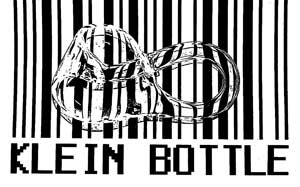
Image courtesy of Robert Ghrist
Barcodes: The Persistent Topology of Data - AMS Current Events Bulletin by Robert Ghrist (University of Illinois)
 Image courtesy of Robert Ghrist |
Data points often seem chaotic and unorganized. But with the right lens, one may see order and distinguishing characteristics. Homology, a tool of algebraic topology, is the lens used by Robert Ghrist and others to filter data and find persistent topological characteristics. One appeal of homology lies in its ease of computability compared to other topological invariants. By creating a parametrized family of simplicial complexes built from the original sampling of data points, Ghrist explained how one could construct a "bar code" giving a quick visual indication of the most prominent features of the data, sorted according to dimension. As an example, he showed a series of complexes built from a small sampling of points from a torus. The barcode for even this small sampling correctly indicated one or two "holes." |
For a more impressive example, data points from a large sample of grayscale digital pictures of natural imagery were combed through in hopes of finding natural patterns or structure. By selecting small 3x3 grids of pixels to analyze, persistent homology was revealed in three "loops" (generators of the first homology group) inside the resulting nine-dimensional space. These loops passed through data points in such a way as to suggest that nature exhibits a preference for certain visual arrangements. Furthermore the higher homology indicated a way to embed a Klein Bottle into the space of pixilated images, thus the picture of the Klein bottle atop a barcode. For pictures from this talk, and for text and images from the other three talks in the session, refer to the Current Events Bulletin booklet.
--- Brie Finegold, 2006 AMS-AAAS Media Fellow